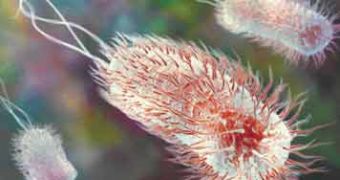Apparently, it is possible to teach an old bacterium new tricks, and biologist Matthew Chang can prove it. This researcher has recently created Escherichia coli, or E. coli, bacteria that, once inside the body, target and destroy invasive pathogens that have no business being there.
The scientist, who is now working with the Nanyang Technological University in Singapore, argues that his lab-made E. coli bacteria have thus far proved fairly effective in ridding laboratory mice of a pathogen dubbed Pseudomonas aeruginosa.
This pathogen, otherwise known as P. aeruginosa, has been documented to cause pneumonia and several other illnesses, which is why many consider it to be fairly dangerous.
Nature reports that, shortly after infecting the mice with P. aeruginosa, Matthew Chang introduced genetically engineered E. coli bacteria in their bodies.
The lab-made bacteria did not take long to locate and wipe out the pathogens it had been sent to destroy. Long story short, it acted very much like a mercenary.
One that really knows how to get the job done, some might add.
The scientist explains that his E. coli bacteria are able to take on and destroy pathogens due to the fact that they secrete an antibacterial peptide known to the scientific community as microcin S (MccS, for short).
Interestingly enough, the bacteria have been “trained” to only release their antibacterial peptide cargo when they pick up on a very precise chemical signal emitted by the pathogen they are after.
The same source tells us that, some time ago, Matthew Chang also managed to engineer E. coli bacteria that packed an antibacterial peptide named pyocin.
However, the latter was a tad too big for their bodies so, in order to release it, they had to make themselves explode. In a way, they behaved similarly to kamikaze pilots.
Because the bacteria can now release the antibacterial peptide they carry without killing themselves in the process, it takes significantly fewer of them to treat an infection.

 14 DAY TRIAL //
14 DAY TRIAL //